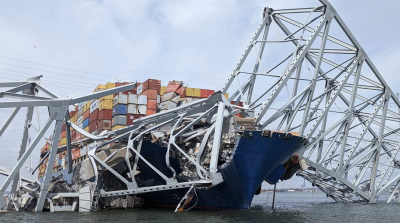At the National Ocean Industries Association (NOIA) annual meeting last week in the Land of Oz — Washington, D.C. — attendees were hoping to find that guy who will pull the levers to shape the offshore industry’s fate.
Government energy officials, legislators, political forecasters and other pundits all offered their views. But the high point of the meeting was the illusionist at Thursday evening’s banquet, who wowed the audience by predicting “what’s in the envelope.” How is this done? By misdirecting the audience’s attention, something Washington is good at.
At the meeting, the oil and gas industry (and especially the offshore business) was praised for its contribution to making our economy and society better – the moral case for energy! The energy business was lauded for driving the economic recovery. Government regulation was cited for hampering companies from doing more for America. The elephant that dominated virtually all conversations and presentations was the future of oil and gas prices. Would they go up, and if so, would they increase enough to restart industry activity? The most realistic advice was also the least happily received. This recovery will take longer to unfold than people are hoping for.
One key factor about the industry’s recovery is starting to sink in: The realization that offshore activity and commodity prices have become disconnected. That means oil and gas prices are likely to rise before offshore activity improves. Why? Two reasons. First, the false oil price recovery last spring has made petroleum executives leery of the sustainability of higher prices. For the execs, prices must stay up for months. Second, the budgeting cycle for producers. With final investment decisions on offshore projects deferred, executives must be confident of the sustainability of higher oil prices before budgeting cycles begin this fall if they are to approve new projects. Long lead-time offshore projects most likely will not be approved in time to generate work in 2017 or possibly even in 2018. Shorter cycle projects might get the nod, but they won’t generate the amount of drilling and development work the industry needs to begin a meaningful recovery.
The money men behind the E&P offshore and the oilfield service industry believe consolidation is critical for an improved environment. That may take a while as managers seek less drastic solutions before dealing with the ultimate resolution — bankruptcy. The process has started and is gaining strength based on the number of Chapter 11 filings.
The failure of OPEC to engineer an oil export freeze seemed to have little effect on the thinking of NOIA attendees. These executives know they can only affect those things they actually control, and the price of oil is not one of them. The wheels of recovery are turning and a recovery will occur. It just may not arrive as quickly as everyone would like.




